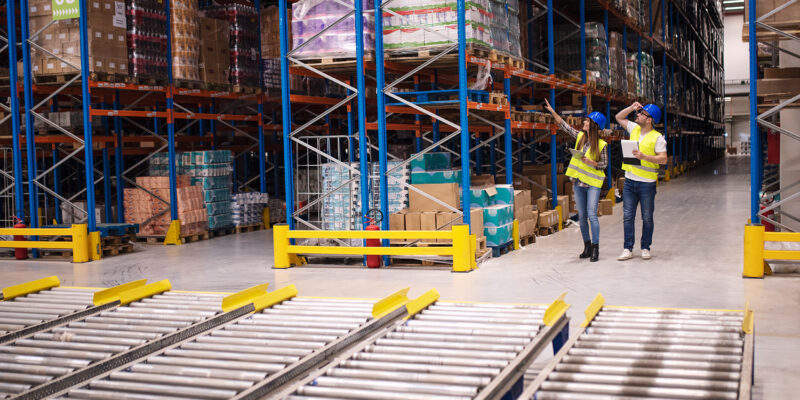Material handling is an important aspect of warehouse operations. It plays a crucial part in the warehouse’s smooth functioning. So, it is essential to choose the right equipment that is both safe and capable of fulfilling the warehouse requirements. Besides, it needs to be value for money.
In recent years, we’ve seen equipment progress from its most basic form to the most technologically advanced forms. So, let us have a glimpse at various types of material handling equipment used in warehouses.
Types of MHE used in warehouse
MHE comes in various forms that help warehouses run more efficiently. For simplicity of identification, they are divided into four primary components. The four categories are bulk material handling equipment, engineering systems, storage and handling equipment, and industrial vehicles.
Material handling equipment for bulk materials includes equipment that transports, stores, and regulates bulk materials. Bulk handling material equipment is often designed to transfer and store materials in a loose state. These machines deal with food, liquids, metals, and minerals, among other things.
Engineered systems refer to bulk material shifting equipment that is designed to automatically transport and store objects. These are automated equipment that has low or zero manual interference. They’re extremely popular since they take the place of physical labour in a range of occupations.
Reach trucks come in a vast range of equipment, many of which are meant to aid in the movement of materials. Small, hand-operated equipment to massive, drivable equipment are all examples of material handling equipment. In general, there are two types of industrial vehicles: non-lift trucks and lift trucks. Non-lift trucks are just intended for transportation, whereas lift trucks may load and stack items.
Storage and handling equipment allow items to be properly stored and organized while they wait for the next stage of the manufacturing or distribution process. This storage equipment may be used to retain products for short or lengthy periods, depending upon the requirement. Storage and handling equipment is typically fixed and not automated however it is frequently used in conjunction with automated systems and equipment.
Warehouses typically employ material handling equipment to aid in the processing and storage of commodities. Reach trucks, stackers, pallet trucks, and order pickers are all common warehouse material shifting equipment.
THE SIGNIFICANCE OF MATERIAL HANDLING EQUIPMENT IN YOUR OPERATION
Material handling equipment may be extremely beneficial to businesses in a variety of sectors. Many businesses appreciate how material handling systems and equipment increase the productivity and safety of their operations. Material handling technology may also help minimize waste, cut expenses, and make the most of a facility’s space.
Summary
Material handling equipment for bulk materials includes equipment that transports, stores, and regulates bulk materials. Bulk handling material equipment is often designed to transfer and store materials in a loose state. Using mechanical assistance instead of physical labour speeds up material movement and reduces the amount of movement in the manufacturing process. It aids in the use of gravity to assist material’s movements wherever possible to prevent handling and damage to items in transit. Reach trucks span a vast range of equipment, many of which are meant to aid in the movement of materials.
Small, hand-operated equipment to massive, drivable equipment are all examples of warehouse material handling equipment. Automated storage systems are often used along with material handling equipment. They’re extremely popular since they take the place of physical labour in a range of occupations.


